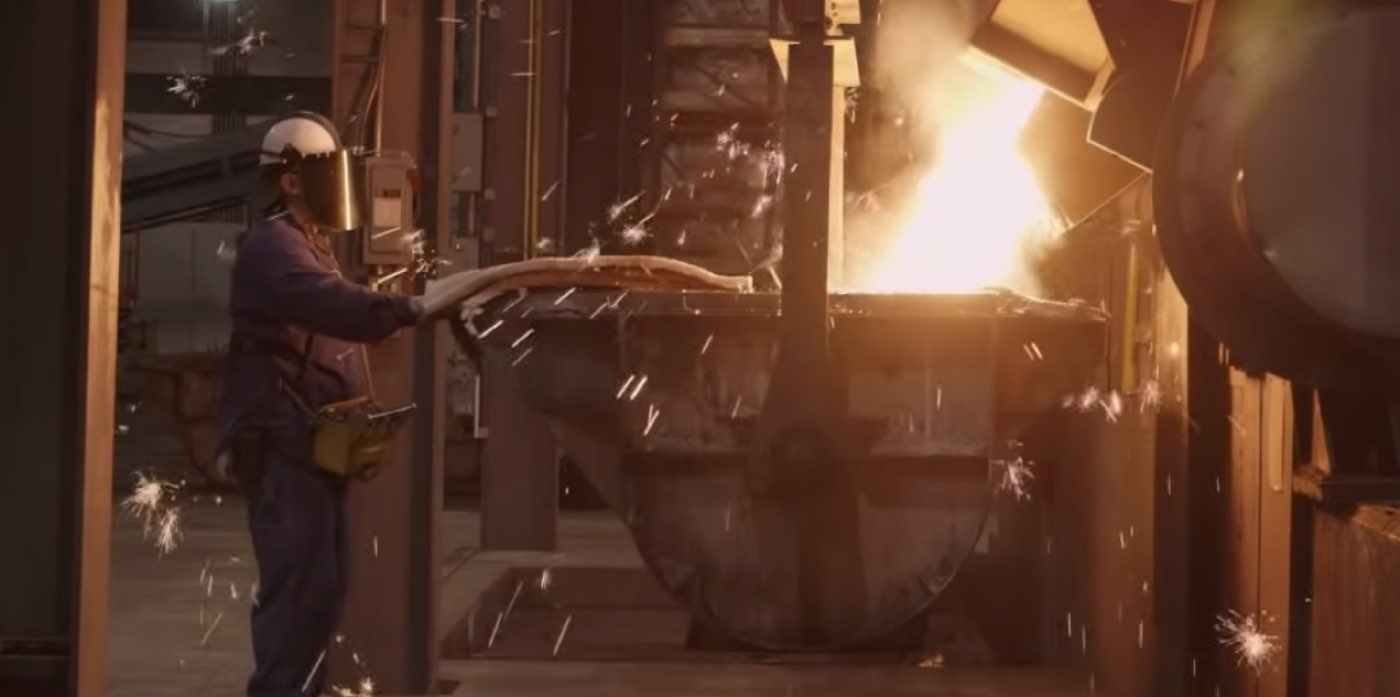The Lodge Foundry
Where every piece of our seasoned cast iron cookware begins.
Lodge Cast Iron is the oldest and longest-running cast iron manufacturer in the United States. Originally called Blacklock, founder Joseph Lodge fired up a long-dormant railroad foundry in South Pittsburg, Tennessee in 1896. Blacklock focused on manufacturing sad irons, tea kettles, kitchen sinks, and cast iron cookware. The foundry thrived until a fateful day in May of 1910, when fire completely consumed the building.
Always resourceful, Joseph Lodge purchased land a few blocks south of the original foundry. Just three months after the fire, in August of 1910, the new Lodge foundry began pouring and manufacturing cast iron products. To this day, the foundry is still operational; it's gone through significant changes and improvements over the years, but the overall method of creating high-quality cast iron cookware remains essentially the same.
Lodge Cast Iron is the oldest andlongest-running cast ironmanufacturer in the UnitedStates.
Lodge creates its diverse line of cast iron cookware through an age-old process called sand molding. A proprietary mix of molten pig iron, steel and other ingredients are poured into a mold made of sand. Since sand melts at a higher temperature than iron, the mold holds its shape. Once the cast iron pan or pot has cooled, the sand mold is broken, leaving behind a brand new piece of cast iron cookware. Sand molding has been around since 680 B.C. It remains the best and most practical way to cast iron cookware.

Melt
We add a mixture of pig iron, recycled steel, castings from our foundry, and alloys to the electric induction furnace. This furnace runs over 2,000 degrees F and it can hold 10 metric tons of liquid iron. It takes 45 minutes for a 22,000-pound charge of metal to liquify.
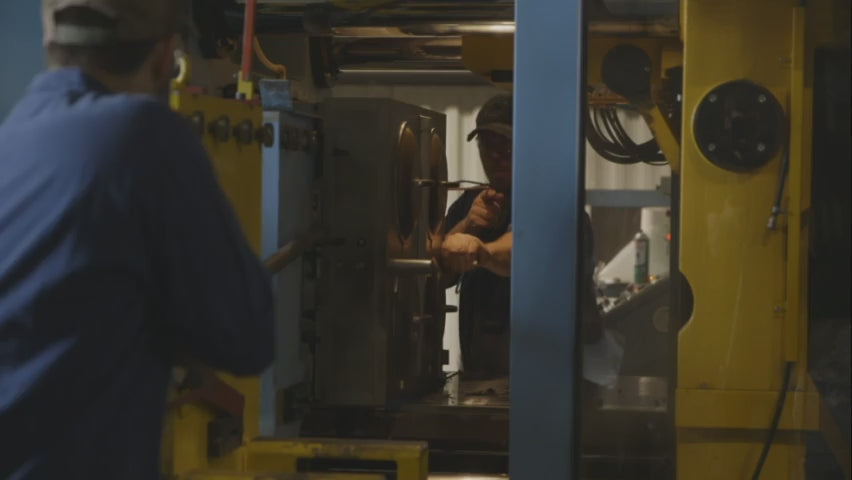
Cast
To make our cookware, we must first start with a pattern. We use the Disamatic molding machine to press a mixture of sand, water, and clay against the pattern and create molds. Each machine is capable of making 350-400 molds an hour.
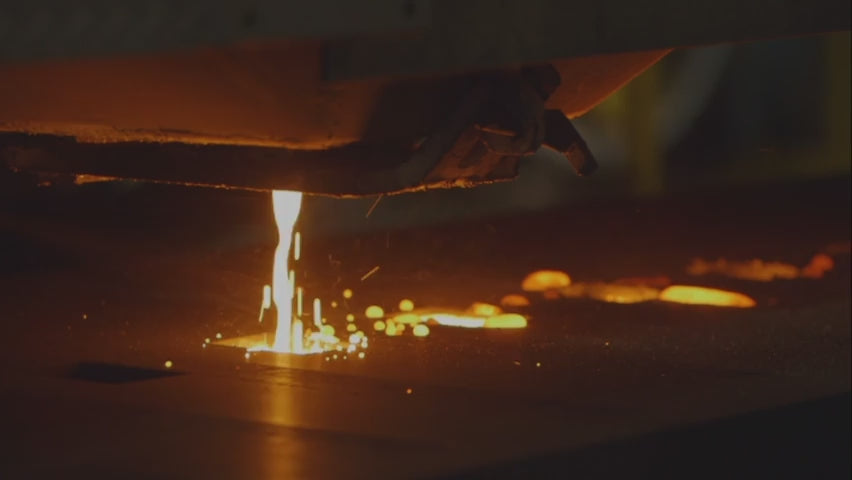
Pour
Once the sand mold is created and the molten iron hits the right temperature, we pour the liquified metal into the mold. Since sand melts at a higher temperature than iron, the mold holds its shape.
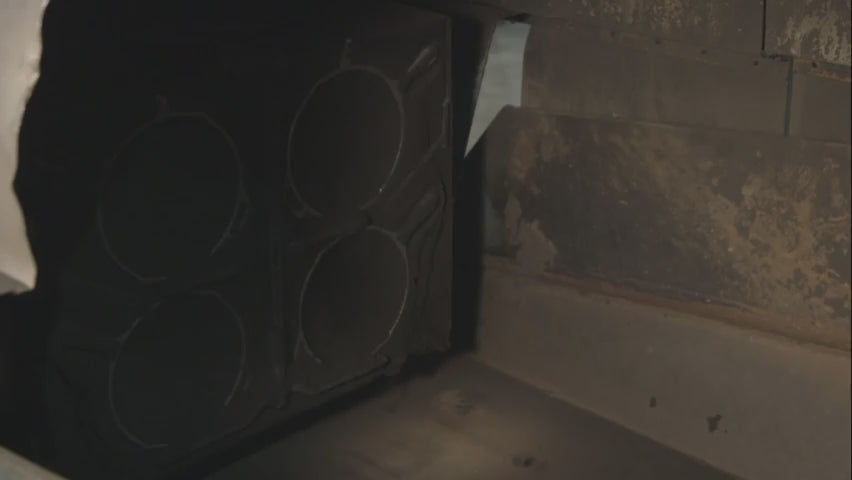
Shake Out
When the cast iron has cooled, the castings move along a vibratory conveyor to shake off the molding sand, which we recycle.
The foundry converted from a hand-pour operation to an automated molding process in 1950. This created a safer working environment for foundry workers. In 1965, Lodge became the first American company to use a Disamatic, a Danish molding machine that had once been used for manufacturing during World War II. This innovative machinery fully automated the casting process and greatly improved production capabilities. During the 1970s, Lodge renovated the foundry with steel columns, a new roof, and a new exterior.
In 2002, Lodge debuted seasoned cast iron cookware — an industry first. Prior to this, cast iron was sold unseasoned, with a thin layer of carnauba bean wax to prevent rust during storage and merchandising. The water-soluble wax had to be washed off at home, then the cookware had to be oiled and baked in the oven before it could be used. Now, in the final step of the finishing process before boxing, Lodge cookware is sprayed with soybean oil and baked at a high temperature, creating a ready-to-use, easy-release surface.
The technique is ancient, but the Lodge foundries are state of the art.
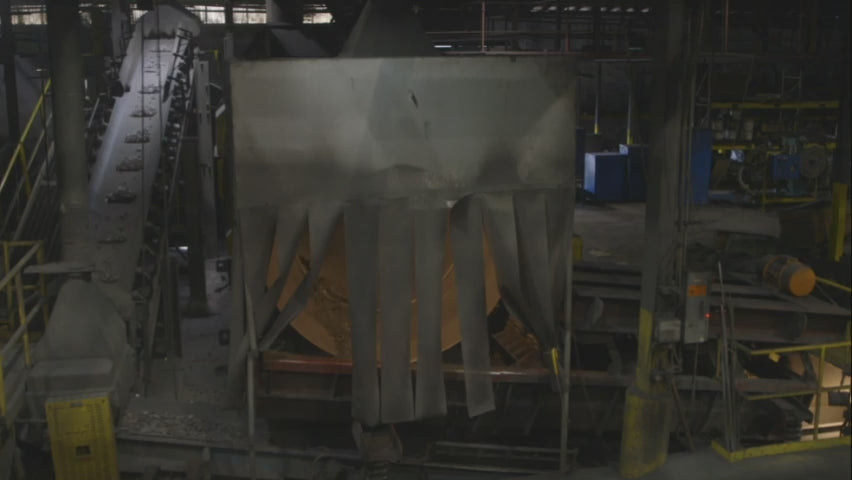
Scrub
The cookware enters a rotating drum, filled with iron media. The iron media is specifically engineered to break up the sand and scrub it from the casting surface. The media is continuously recycled.
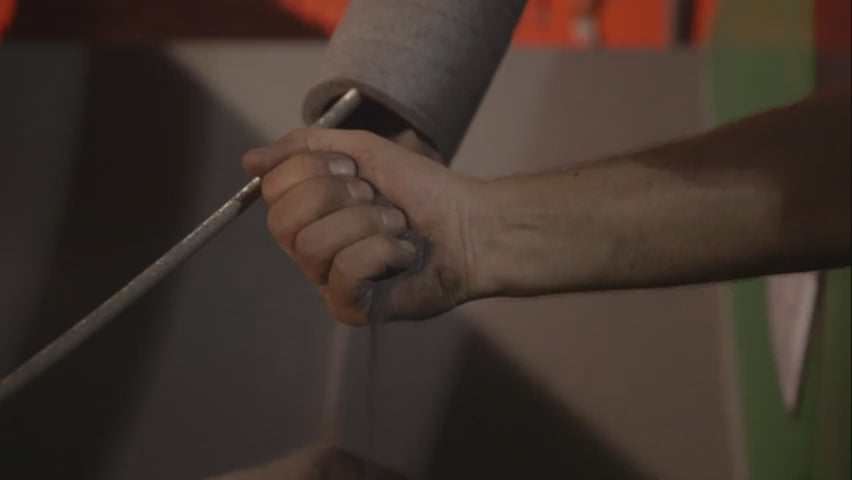
Clean
Our cookware is cleaned with fine steel shot. Inside the machine, the cookware is blasted from all sides. Next, the cookware will fall into a bath of stainless steel media, soap, and water to enhance the finish. The stainless steel media is designed to come into complete contact with every inch of the skillet for a deep clean.
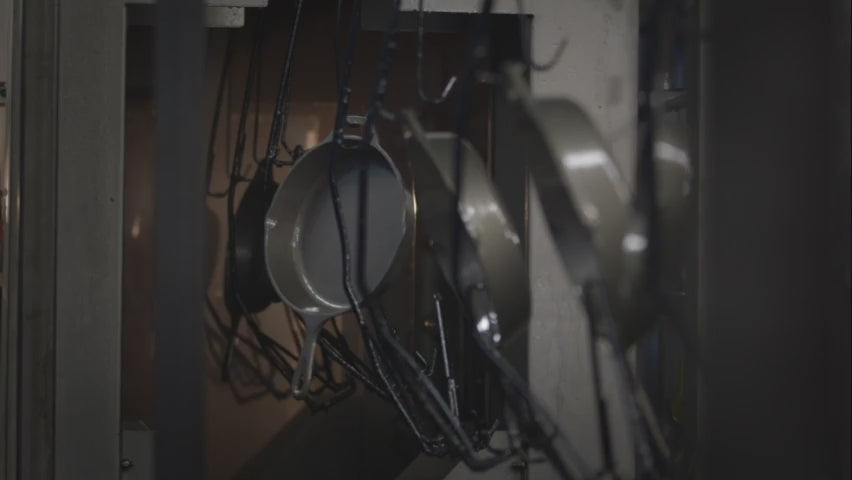
Season
Once the cast iron is completely cleaned, it’s hung on a conveyor to be seasoned. First, they go through a hot rinse and hot air blow off. Our cookware is then sprayed with vegetable oil and baked at a high temperature, well above the range of a typically household oven. This creates a natural, easy-release finish that gets better with use.
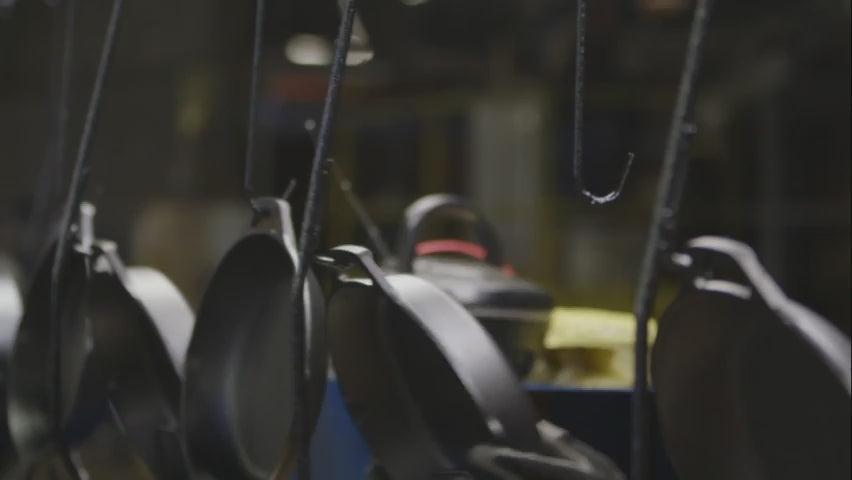
Package
Our employees give the cookware a final inspection before packing it with biodegradable paper and corrugated packing material. Now, all we have to do is get the cookware to you.
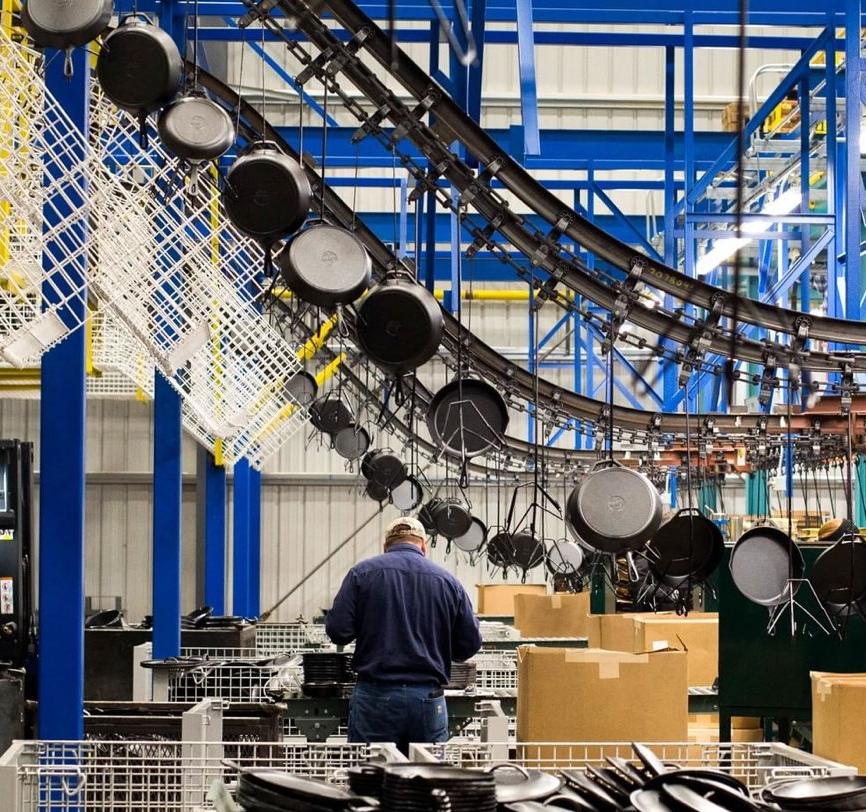
Lodge's second foundry is now in operation.
Nicknamed the 3rd Street Foundry, this new, 127,000-square-foot facility is located just a few blocks from the original foundry. Its first production run was in November of 2017. The 3rd Street Foundry features a melt center with two induction furnaces, a sand system, and two Disamatic molding machines. Built to work alongside the original foundry, this expansion increases Lodge's potential manufacturing capacity by 75%.
Today, Lodge operates a total of five Disamatic molding machines, each capable of making 350-400 molds an hour. We ship an average of one-million pounds of iron product each week—all melted, poured, molded, finished and packaged right here in South Pittsburg, Tennessee, our home for over 120 years.
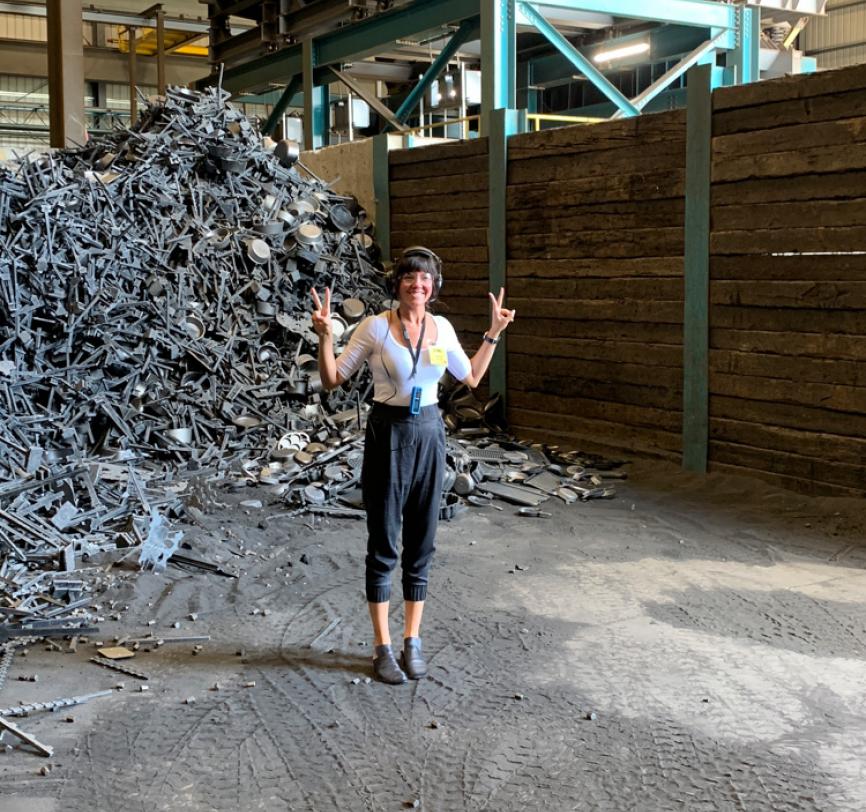
Tour the foundry!
Every year during the National Cornbread Festival, we open our foundries to the public. Come see where your cookware was made and get to know the dedicated people who keep our foundries running smoothly.
